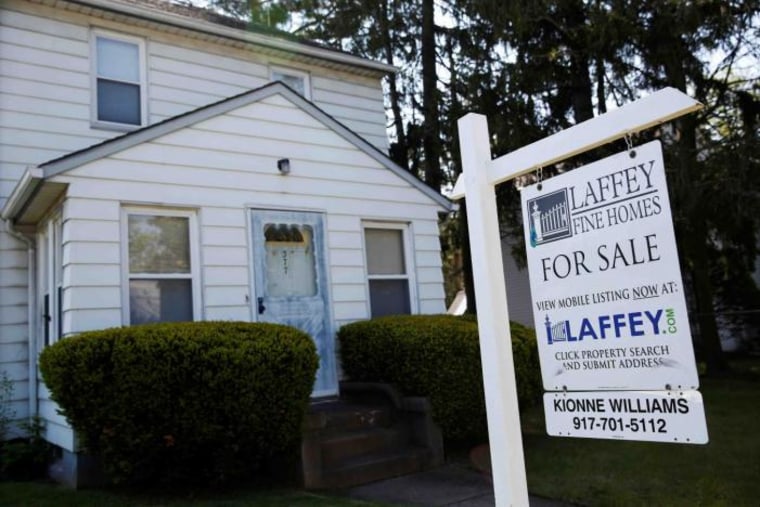Home equity lines of credit got a bad rap during the financial crisis, and now they’re back in a big way, an occurrence that experts say offers potential as well as risk.
These vehicles, also called HELOCs in housing-finance parlance, were blamed for allowing homeowners to treat their homes like piggy banks by borrowing against the equity they built up during the bubble.

According to ATTOM Data Solutions, we are now entering our fifth straight year of increases in HELOC originations on a quarterly basis. In the second quarter of 2016, refinancing was down 12 percent from a year ago, purchase originations ticked up by 1 percent, and HELOCs went up 5 percent — for the 17th quarter in a row.
“Homeowners are once again seeing their homes as a source of wealth and leveraging that wealth,” said Daren Blomquist, senior vice president at ATTOM.
“There should be a healthy respect for the use of HELOCs, because they are one of those tools that can be used by homeowners responsibly or irresponsibly,” Blomquist said.
Pre-crash, many homeowners did the latter, purchasing luxury goods, vacations and depreciating assets like boats or jet skis, only to be caught unawares when housing values plummeted.
This time around, borrowers seem to be putting those funds back into their homes, said Greg McBride, Bankrate.com’s chief financial analyst.
“The current dynamic is that people are staying in their homes longer. With wages having been largely flat for several years, the move-up buyer hasn’t been able to move up,” he said. “Rather than taking out a new mortgage on the bigger home they’re looking to buy, people instead are staying put and taking out a HELOC to fund improvements or upgrades to their current home now that they expect to be there longer.”
“From a bigger picture perspective I think there’s also the question of, ‘Is this a good thing, is this a bad thing?’” said Ralph McLaughlin, chief economist at Trulia.
“I don’t think it’s as bad this time around because homeowners are using HELOCs to renovate their houses, to add value. They’re using it for investment,” he said.
Read More: Millennials Cause Home Ownership to Drop to Its Lowest Level Since 1965
There are other reasons experts say this isn’t exactly a repeat of 10 years ago. For one thing, even with the steady growth in HELOCs, the number of such loans today is still a fraction of the pre-recession peak. What’s more, McLaughlin said many lenders today are offering more consumer-friendly terms like limits on how high those adjustable interest rates can climb on an annual basis or over the life of the HELOC.
This isn’t going to be a re-run of the subprime mortgage crisis because today lenders have tightened lending standards while regulators have implemented consumer protections such as an ability-to-repay standard, McBride said.
“You’re not going to qualify for a loan that’s going to get you into trouble, but borrowers still have to be cautious about what they’re taking on,” he said.
There is evidence that lenders are easing their standards a bit. According to the New York Fed’s quarterly report on household debt and credit, 44 percent of new mortgage dollars in the second quarter of 2016 went to borrowers with credit scores below 760, a two percentage point increase from the first quarter. That’s still a far cry from the days pre-credit crisis when a credit score above 620 was considered decent.
The Fed’s impending increases in interest rates is something borrowers should keep on their radar, but McBride pointed out that the central bank’s slow start and measured pace of rate increases should keep most homeowners from experiencing sticker shock, as long as inflation remains low.
“If inflation really picked up, so too would the rate of rate increases,” he said.
Of greater concern for housing economists are the homeowners who took out HELOCs just prior to the housing bust. “We’re still dealing with some of the problems from the last boom-bust scenario,” Blomquist said.
Read More: Is a Fed Rate Hike Bad News for Homeowners?
HELOC payments generally are interest-only for the first decade, so homeowners who cashed in on their home equity just before the bubble burst in 2006 are now facing monthly payments that have principal rolled in as well. And while many homeowners have seen the value of their houses bounce back since then, the uneven nature of the real estate recovery means that a significant number of borrowers could be facing a painful increase.
According to ATTOM figures, there are 2.4 million HELOCs scheduled to reset between this year and 2018, and almost 60 percent of those resets will take place on homes that are still underwater.
So, while current HELOC borrowers probably won’t face sticker shock from interest rate increases in the near term, they could face similar challenges down the road if they don’t heed the lessons of the past, Blomquist warned.
“You’re counting on the market to continue to basically behave the way it is behaving now, and we know from the last 10 years that’s definitely not the case,” he said.
